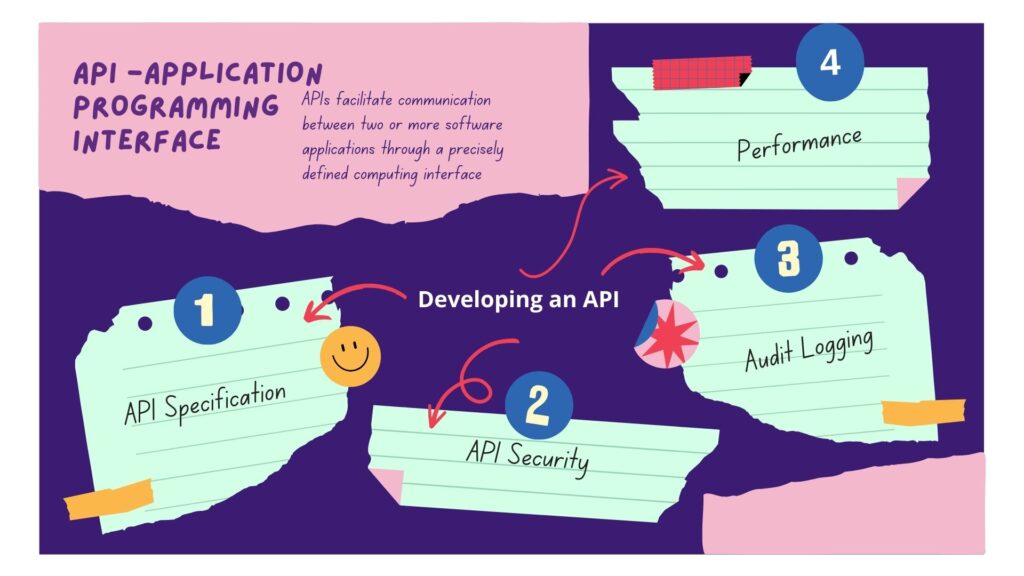An Application Programming Interface, commonly known as API, serves as a contractual agreement or specification provided by software. It pledges to uphold certain standards when other software applications seek to engage with it for executing various business operations.
APIs facilitate communication between two or more software applications through a precisely defined computing interface.
1. Real-Life API Example:
A familiar instance of APIs can be observed in mobile apps, where the user interface is distinct from the backend functionality. Real-time data such as weather updates, emails, game scores, and live telecasts are retrieved through APIs deployed on servers. Similarly, modern websites use technologies like AJAX and Web Sockets to fetch on-demand data via APIs.
Social sharing buttons on web pages also exemplify API usage. Clicking on these buttons triggers a confirmation popup, and upon confirmation, the post is shared with a selected social media platform through an API.
2. How to Utilize APIs:
Understanding the internal workings of an API is not necessary for achieving specific business goals or tasks. Users need only comprehend how to interact with the API. For instance, airline ticket booking applications utilize APIs provided by airline companies. The application passes passenger and flight information to the API, which processes the data, books the ticket, and returns a successful response to the application.
3. Purpose of an API:
Software applications are constructed in modular pieces to avoid redundant coding. These reusable components are exposed to other applications through an interface, i.e., an API. APIs standardize components, make them easily reusable, and provide abstraction to protect business logic. This benefits both users and developers, streamlining the design, testing, building, managing, and versioning of components.

4. Developing an API:
4.1. API Specification:
A well-documented, standardized, and easily comprehensible API specification is crucial. It should outline the business operation, API URL, HTTP protocol and methods, request and response structures, valid field values, filtering and sorting mechanisms, authentication/authorization details, and success/error codes.One of the most famous way of creating API is REST architecture.
4.2. API Security:
Security is paramount, especially for protecting sensitive user information. APIs must be safeguarded against unauthorized access, allowing only users with secure credentials to access them.
4.3. Audit Logging:
To monitor API usage and identify misuse or unauthorized access, proper audit logging is essential. An effective monitoring system triggers alerts in case of suspicious activities.
4.4. Performance:
Optimal API performance is crucial for usability. Poorly performing APIs discourage user adoption and can lead to business losses. Ensuring swift response times is particularly important for applications involving real-time operations.
Share your insights on API design and best practices.
More references: Wikipedia

I am extremely inspired along with your writing abilities as smartly as with the format for your blog. Is this a paid subject or did you modify it yourself? Anyway stay up the excellent quality writing, it is uncommon to look a great blog like this one today!